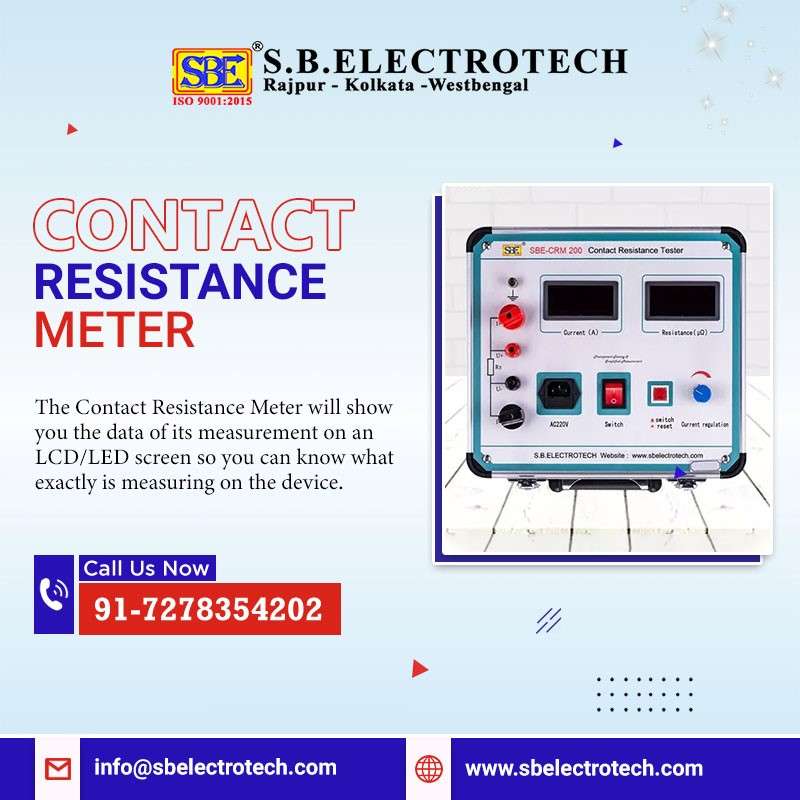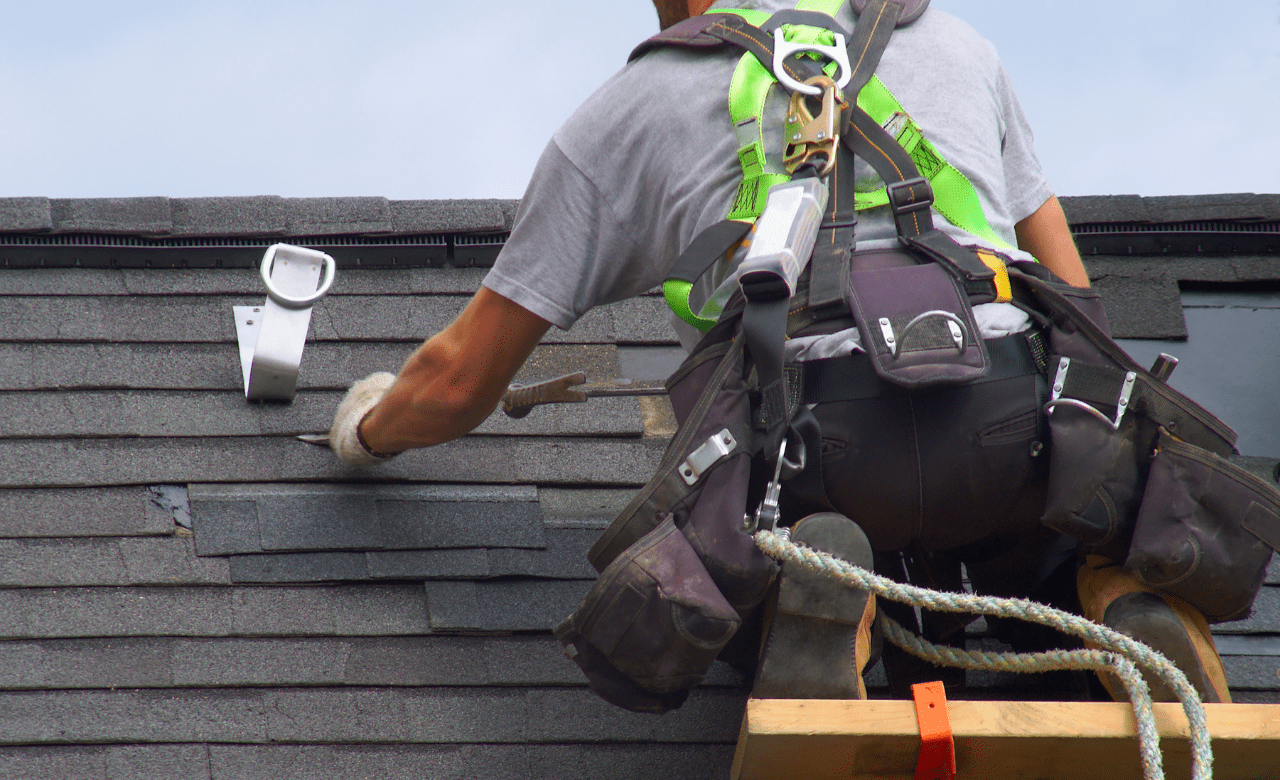Static contact resistance measurement is critical for determining the health and performance of a circuit breaker’s main contacts. Poor contact conditions can cause arcing and single phasing, which are frequently caused by oxide deposits and moisture absorption, both of which increase contact resistance. When the circuit breaker is closed, this results in I2R losses owing to hot-spotting. The contact resistance meter or tester can be employed to test the resistance of a variety of electrical circuits, parts, and systems, including switches, cables, relays, and generators.
Contact Resistance Meter
Regularly examining the connections of a circuit breaker can reveal its health and functionality. Contacts that are improperly maintained or broken can cause arcing, phase loss, and even fire. Contact resistance test is critical for contacts that carry a lot of current (such as switchgear busbars) because a higher contact resistance can limit current carrying capability and increase losses.
The contact resistance is often tested with a micro- or milli-ohmmeter, also known as a low ohmmeter. With the help of Perfluoroelastomer Ffkm O-rings, contact fretting corrosion can be recognized and avoided. The contact resistance meter offered by leading Contact Resistance Meter Manufacturers in India shows the results of its measurements on an LCD or LED screen so that you can see it clearly from a distance as well.
What Is The Purpose Of The Contact Resistance Meter Or Test?
The circuit breaker’s contacts must be tested regularly to ensure that it is in good working order. Poor contact can cause arcing, phase loss, and even fire. This test is especially critical for contacts that transport a considerable amount of current. Such as switchgear busbars, where higher contact resistance results in poorer ampacities and higher losses. Contact resistance measurements are often performed with a micro/milliohm meter or a low ohmmeter.
Furthermore, contact resistance measurement aids in the identification of fretting corrosion of contacts as well as the diagnosis and prevention of contact corrosion. An increase in contact resistance can produce a high voltage drop in the system and must be regulated.
Features of a Contact Resistance Meter
- Micro-ohm levels can be readily measured and shown using these portable meters.
- Usual applications include contact resistance in earth switch joints, bus bar joints, circuit breakers, isolators, and more.
- Simple to connect and operate
- Displays test current and micro-ohms directly
- Easy to operate
- Even technicians can conduct tests
- Internal memory
- Built-in printer, memory, and real-time clock
- The test time stamping on each record allows for future time reference
- The software can generate reports that can be exported to PDF or Microsoft Excel.
The Working Mechanism Of The Contact Resistance Meter
The contact resistance tester operates based on Ohm’s law. It measures the resistance value inside the electrical components to determine whether the current in the circuit is normal. A voltage source is connected to the electrical component being tested, and an ammeter (or voltmeter) is connected to the other end of the circuit.
The tester will then use Ohm’s law to calculate the overall resistance value in the circuit by measuring the internal current and voltage values of the electrical components. If the measured resistance value exceeds the permitted range, it indicates that the circuit may have a fault or damage. At this point, a more thorough evaluation and repair of electrical components is required.
Contact Resistance Meter: Content Of The Contact Resistance Test
Visual examination and contact resistance inspection are two common checks done on circuit breaker contacts.
1. Visual inspection entails inspecting circuit breaker contacts for dents caused by arcing as well as contact wear or deformation.
2. The contact resistance measurement is the second check. This entails passing a fixed current, often 100A, 200A, or 300A, through the contacts and measuring the voltage drop across it. A particular contact resistance meter or measuring equipment is used for this test. Next, Ohm’s law is used to determine the resistance value. The resistance value should be compared to the value specified by the manufacturer. This value should be compared to earlier records as well.
Moreover, these two tests must be performed together. Because there are instances where the contactor has good contact resistance yet is nonetheless damaged. As a result, for a contactor to be considered healthy, it must have good contact resistance and pass the visual inspection test.
Areas of Applications of Contact Resistance Meter
Typical resistance measurement applications are:
- Circuit breaker contact resistance in non-energized areas
- Electrode resistance measurement
- Bus bar joints
- Isolator contacts
- Cable drum resistance measurement
- Cable splice
- Welded joints
- Bond resistance
Conclusion
The contact resistance meter is a microohmmeter that has been specifically used to measure contact resistances in microohms. The contact resistance meter displays the results of its measurements on an LCD or LED screen so that you can see what the instrument is precisely monitoring.
S.B. ELECTROTECH is one of the most reputable Contact Resistance Meter Suppliers in India. Our resistance meters are equipped with precise measurement technology that is specifically developed for obtaining precise readings in any circuit breaker. Visit our website for more information about our products!
Frequently Asked Questions
What exactly is contact resistance?
Contact resistance is the electrical resistance that occurs when components are linked at the contact point. It is determined by the material used and the connection’s quality. There must be a differentiation between purposeful and incidental contact resistance which can be seen on a contact resistance meter.
Is contact resistance affected by temperature?
Contact resistivity decreases with rising temperature and current density, the latter due to the contacts’ non-Ohmic nature. These findings are critical for comprehending the design, scalability, and behavior of nanoscale data storage devices.
What is the need for a low resistance measurement?
Low resistance measurements are critical for identifying damaged components and preventing overheating, energy loss, and malfunctions during a power surge. The low-resistance ohmmeters, micro ohmmeters, and contact resistance meters or test sets can measure resistance with a resolution of 0.1 micro-ohm.
Why would someone need a contact resistance meter?
The tool assists in identifying damaging or corroded contacts, preventing harm to substation equipment.










